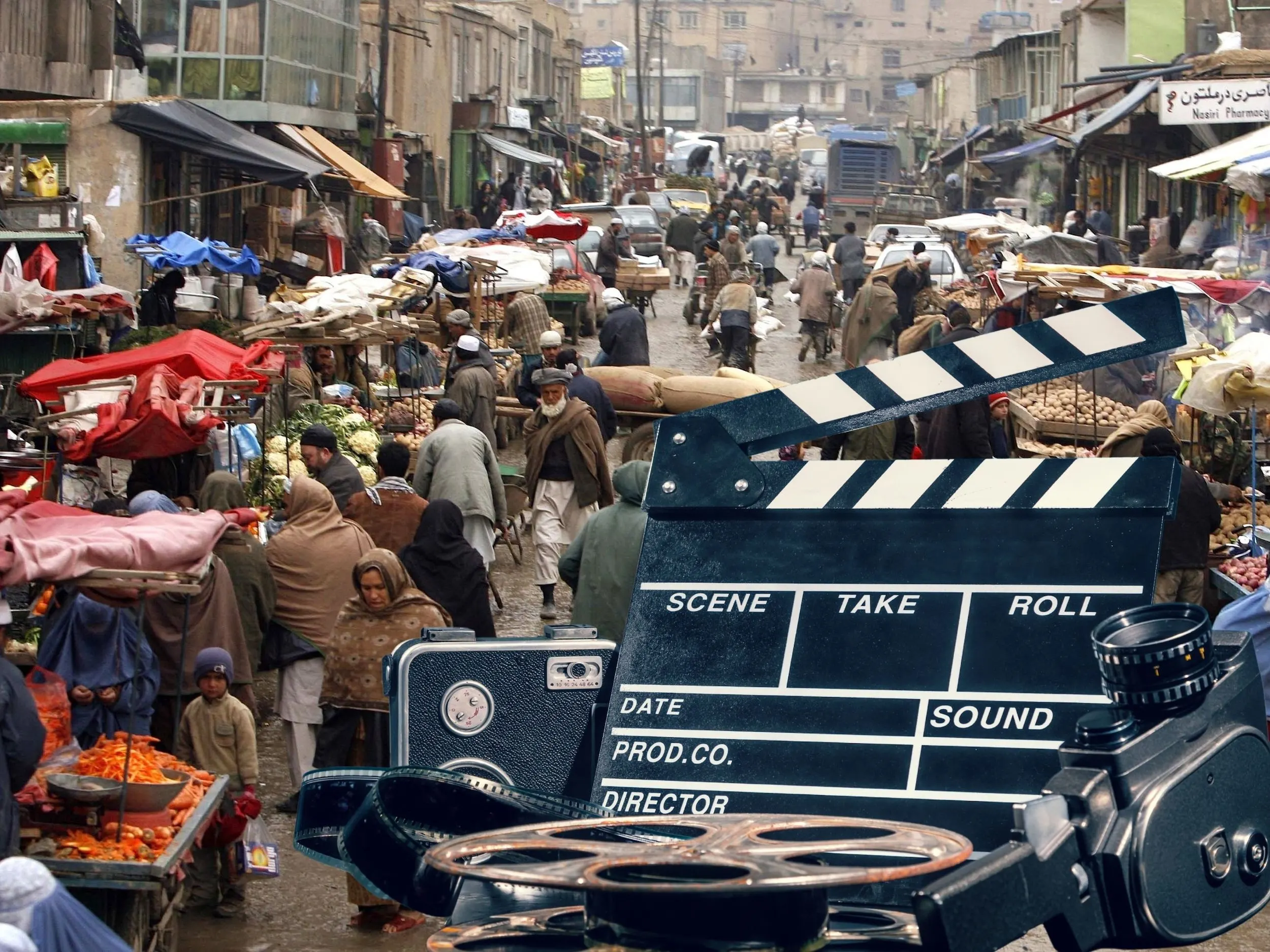Sofia De Vera combines a heartfelt passion for cinema with over 15 years of critiquing for esteemed film publications, wielding academic credentials from the University of Southern California and New York University, to serve as your personal guide through the enchanting worlds of film and television. Her full guest bio can be found here.
Afghanistan has a lot to offer for both national and international filmmakers with majestic and vast mountain ranges, a rich mix of cultures – and the charm and hospitality of the Afghan people. However, due to the country’s inaccessibility and bloody recent past, there are few movies set in Afghanistan – and even fewer that were actually filmed here…
The film industry in Afghanistan has an unusual yet interesting star and has certainly had extreme ups and downs throughout its history. After gaining independence from Britain in 1919, Afghanistan’s first ruler, Amanullah Khan, engaged a film team to film his own abroad journey in 1927-1928, from which the first surviving Afghan film footage survives.
Later, documentary filmmaking was established in 1959 by a film production unit under the Independent Press Directorate, which was, at the time, producing material for Mohammed Zahir Shah, Afghanistan’s last king. The Directorate, which changed its name twice in the 1960s, established the Afghan Film Organization (AFO), Afghanistan’s state-run film company, in 1968 with assistance from the U.S. to make and distribute films.
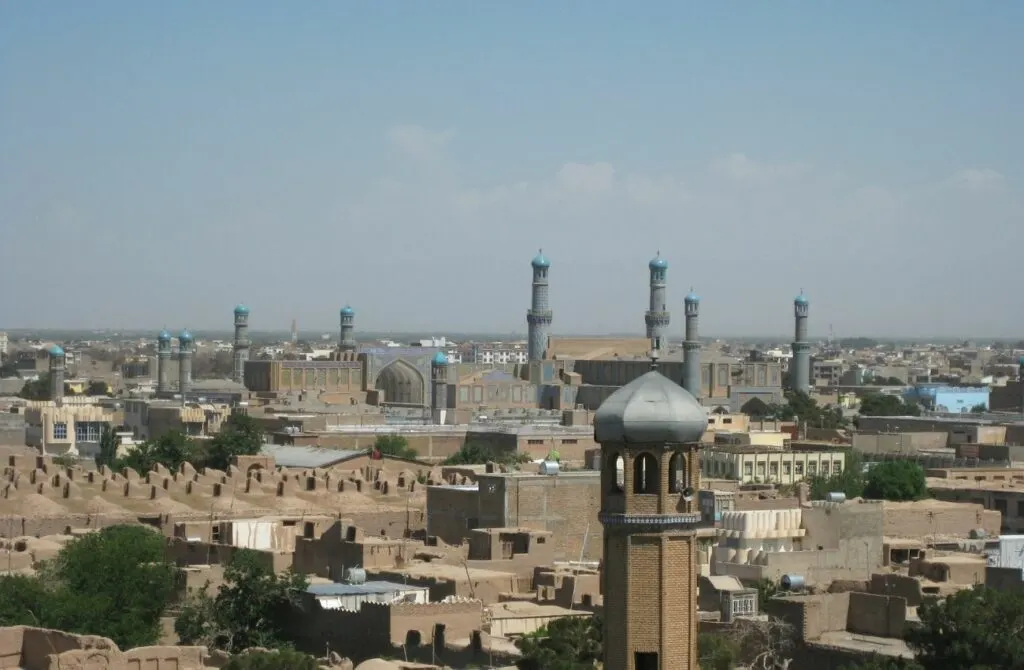
Rozgārān (“The Times,” basically three distinct films combined together) was premiered to national acclaim in 1970 and was the first feature film produced by the newly founded Afghan Film. Rozgārān heralded the start of an era in which Afghan filmmaking in Kabul grew increasingly prevalent during the next two and a half decades.
AFO’s primary goal was not to create fictional films at the beginning. It was primarily intended to record formal visits by the king and other significant persons, as well as societal events. However, following the Communist Revolution, the ideology on this subject radically shifted. The government increased the amount of money available to create fiction films after which point Afghani directors began making around six films every year.
Notwithstanding the sectarian conflict that ravaged large areas of Afghanistan in the 1980s, color movies made their way into the Afghan majority. However, as the crisis progressed, many new faces in the film industry were compelled to evacuate to neighboring Iran and Pakistan in order to continue their projects and to keep the dream of the Afghan movie center alive.
Big stars were put on hits lists and in some instances, brutalized, executed, horribly injured, and mutilated in Afghanistan’s few movie theatres, which were frequently bombed and threatened by Taliban unionists and hardline Islamist extremists. When the Taliban took complete power in 1996, the few remaining cinemas were attacked and many films were burnt.
Since the first fall of the Taliban in 2001, movies filmed and set in Afghanistan then slowly began to re-emerge from a lengthy period of forced silence. However, with the recent return to Taliban-ruled Afghanistan, it is unlikely we will see more movies set in Afghanistan in the near future.
Regardless of the ups and downs of the Afghan film industry, we have compiled a list of twelve of the best films made in and about Afghanistan. These Afghan films have narratives that rely on their settings as much as their main protagonists, and as a result, spectators get a glimpse of this often misunderstood country through the director’s eyes. This selection of films illuminates the history of the area while also elevating the perspectives and personal experiences of the Afghani people.
It is in this tradition of honoring the concept of cinematic travel, we have also assembled lists of our favorite films shot in some of our all-time favorite travel destinations: Turkey, Oregon, South Africa, Thailand, Barcelona and Dubai.
Wondering where to watch? It depends on where you live in the world and which streaming services you have. We link to the streaming service we watch on in each case - be it Netflix, Amazon Prime, Apple TV+, or elsewhere.
You can get one month free of Amazon Prime (or a 6-month trial for students) of Amazon Prime and also get immediate access to FREE Two Day shipping, Amazon Video, and Music. While you won't be charged for your free trial, you'll be upgraded to a paid membership plan automatically at the end of the trial period - though if you have already binged all these, you could just cancel before the trial ends.
Apple TV+ also has a one-week trial, and Hulu has a one-month trial (which can be bundled with Disney!). Another option might be using a VPN to access Netflix titles locked to other regions. Netflix is now available in more than 190 countries worldwide and each country has a different library and availability. US Netflix is (understandably) one of the best.
While we wish everything could just be in one place - for now, it seems these are the best streaming platforms to watch on.
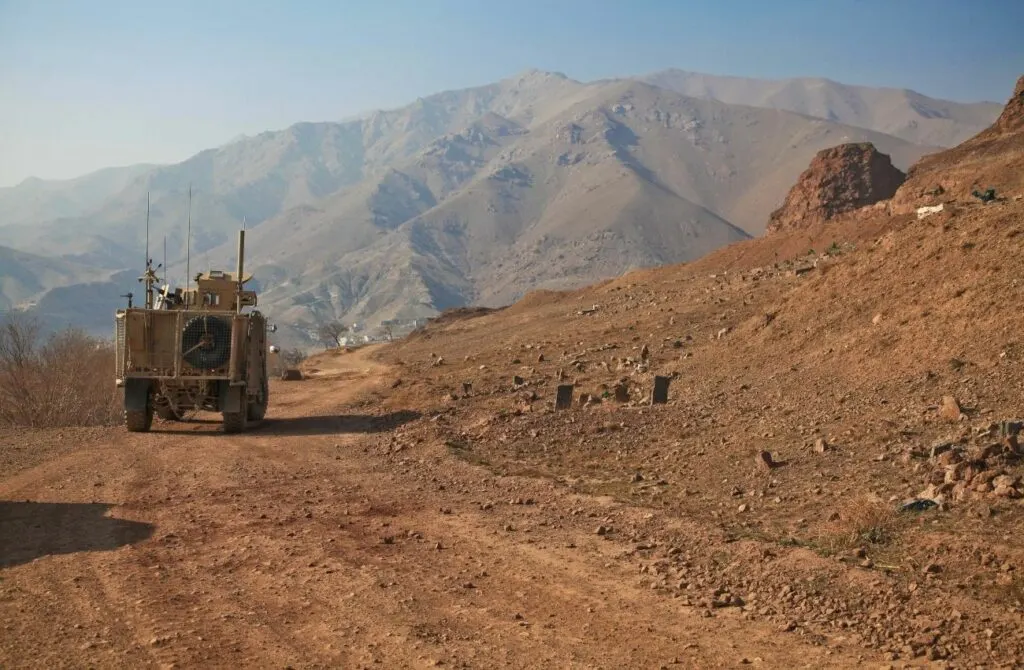
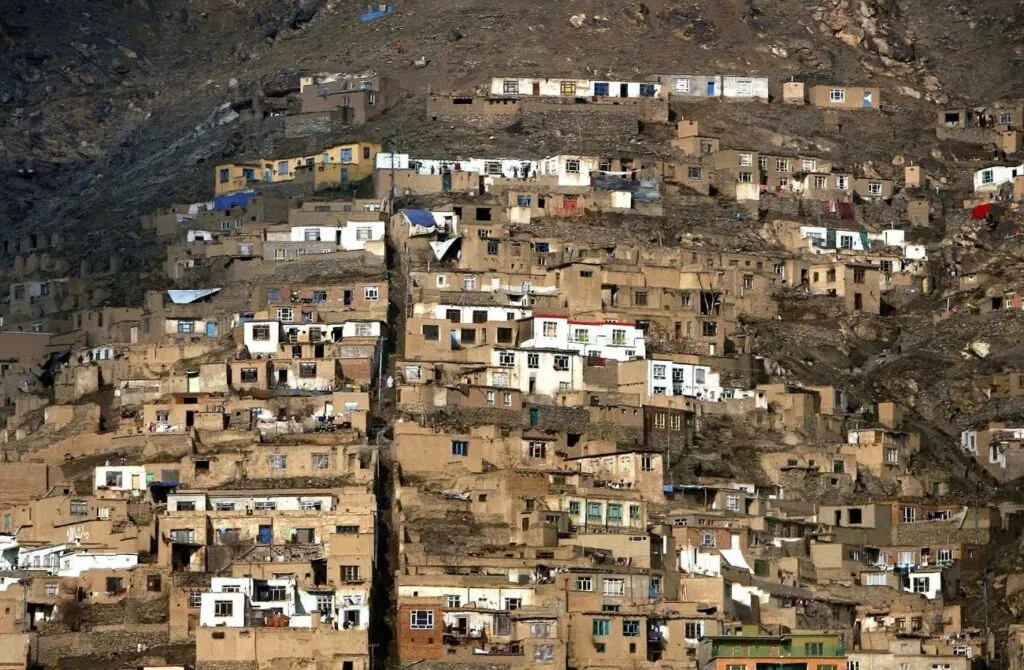
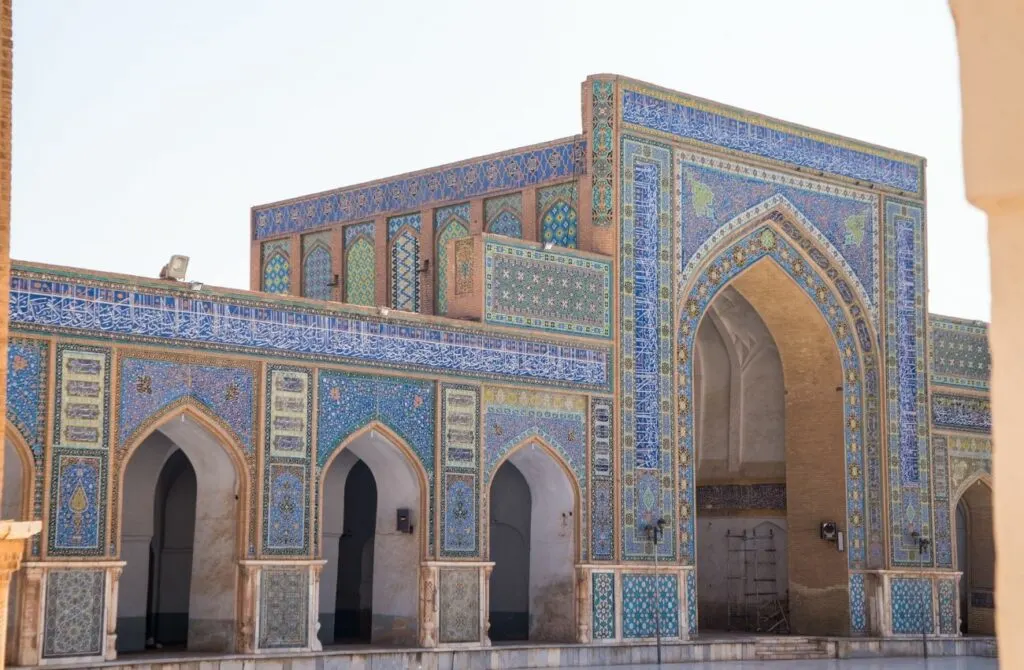
Page Contents
Local Movies Set In Afghanistan
Osama (2003)
First of all, this film is an exact portrayal of Taliban rule. Afghanistan is under the control of the Taliban, and they are imposing strict dictatorship, especially for women, who are not permitted to work, among other things. This circumstance is particularly challenging for a family of three women who are the primary breadwinners.
When the Taliban closes the hospital where they work, a 12-year-old Afghan girl and her mother lost their employment. Women are also not allowed to leave their homes without a male. There is no one left to maintain the family now that her husband and brother have been killed in warfare. The mother has nowhere to turn because she is unable to leave the house.
She disguises her daughter as a male since she feels she has no other option. The girl, now known as ‘Osama,’ goes on a perilous and perplexing mission to protect the Taliban from discovering her actual identity. Osama is the first Afghan film shot following the Taliban’s collapse, and it’s based on a true story.
The film does not reveal the girl’s genuine name throughout the story. When she disguised herself as a boy, her companion gave her the name “Osama.” “Osama” as a movie feels like a narrative from another era/world. Despite the fact that it took place in Afghanistan, it depicts acts so contemptible that it’s difficult to believe such notions still exist in today’s globe.
What it demonstrates is that, underneath the Taliban’s iron fist, the justification of “respect” for women was used to sentence them to a lifetime of inhumane physical and mental agony. This is not how a society that values and appreciates women would treat them.
Wajma, An Afghan Love Story (2013)
The story of this film starts in winter, in the city of Kabul. Mustafa, a jovial and charming waiter, fascinates Wajma, a lovely girl and Law student. The two start a secret relationship; they’re passionate and sensual, but they’re always aware of the cultural standards they’re breaching.
Wajma is assured that Mustafa will marry her, but this hope disappears once she learns she is pregnant, and their love affair spreads in the community. Her father will have to choose between his traditional obligation to maintain family honor and his love for his child.
Wajma, An Afghan Love Story is unflinching, uncompromising, and all-too-real—almost hard to watch, yet worth watching. The film offers a straightforward and all-too-familiar story: Mustafa, a gorgeous young man, is introduced to the girl. They fall in love with each other. She gets pregnant with a child. Mustafa abandons her.
Wajma is alone in a harsh, hierarchical Afghani environment, with a promissory household and a father who wants to murder her. Furthermore, this film is daring in the sense that it questions the moral high ground of Western social norms and ideals. When Wajma’s mother implores him to spare the rod, and let them get married, he yells at his wife, “Shut up!” What good has your independence done us?” She doesn’t — and can’t — respond.
If you want to see just how strict hierarchy norms are in Afghanistan, go and watch out this movie.
Hava, Maryam, Ayesha (2019)
This film is about three Afghan women living in Kabul, from various socioeconomic backgrounds, who are confronting a major difficulty in their life. Hava, a conventional pregnant lady who receives little attention, lives with her parents. Her primary source of joy is conversing with the baby in her womb.
Maryam, a well-educated T.V. news reporter, is set to leave her cheating husband when she discovers she is pregnant. Ayesha, an 18-year-old girl, decides to marry her cousin since she is pregnant by her lover, but vanishes after learning of the announcement. For the first time, every one of them must address her own difficulty.
It seems that director Karimi wants to celebrate love and freedom, and this film is a project aimed at empowering Afghan women. Karimi, who’d been named the new director of the Afghan Picture Association, not only directed the movie but also co-wrote and co-produced it with Katayoon Shahabi of Noori, an Iranian female producer, and sales agency.
Hava, Maryam, Ayesha , a financial success in Afghanistan, was chosen as the national submission for the international feature picture prize at the 92nd Academy Awards in September. The three ladies and their tales are quite different, but they share certain similarities. The pregnancy of the ladies is the most visible and obvious introducing us to three distinct narratives.
Internationally Renown Movies Set In Afghanistan
Earth And Ashes / Khakestar-o-khak (2004)
Before talking about the movie, let me discuss a little bit of the background of the director and his connection to this film. Atiq Rahimi, an Afghan director, lived his infancy in India. After the Soviet invasion of Afghanistan in 1979, he was compelled to flee the country and reside in France. That was where he penned his debut novel “Earth and Ashes.” And for its account of the Afghan conflict, this book was a major hit.
He opted to adapt his own novel for a film since he has good recollections of battle as a youngster. Now the story of the movie begins when the Soviet army enters Afghanistan, the old Dastaguir sees his town destroyed and his clan killed. One of the rare survivors is his young grandson Yassin, who was deafened by the bombardment. The two go out over a harsh environment in search of Murad, the old man’s son, and the boy’s father, who works in a coal mine.
They arrive at their destination only to discover that they must wait and rely on whatever resources they have left: a carton of chewing tobacco, a few unripe apples, and the generosity of passersby.
Earth and Ashes is a haunting narrative of heart-breaking loss, as well as human endurance in the face of chaos and conflict. The problem with this movie, from my point of view, is that it is narrated solely from the perspective of an elderly Afghan man and his little grandson in a random manner.
That’s why they look very common and general; in other words, this is what audiences expect from a country that has been ravaged by War. Atiq Rahimi shows us a family who has lost everything: home, hope, and money.
Lone Survivor (2013)
Here is a direct synopsis of the movie: In late June 2005, Navy Seal Marcus Luttrell and his group went out on a mission to arrest or kill prominent Taliban leader Ahmad Shah. They had no option but to observe their rules of engagement or be imprisoned after running into mountain shepherds and arresting them. Marcus and his squad are now fighting for their lives in one of modern warfare’s most courageous efforts.
Lone Survivor is, however, a fantastic action film. Berg, at the very least, is a skilled action director who does not back down from a challenge. Every bullet, scratch, scream, and fall is excruciatingly agonizing. The falling, in particular, appears to be the focus of the film, with the four men plunging, spinning, and crashing over cliffs to escape the Taliban. The film is about actual deaths that happened, and Berg doesn’t hold back when it comes to depicting their deaths.
Additionally, many viewers will be moved by the opening and closing sequences, which feature video footage of troops who lost their lives during Operation Red Wings. These sequences, particularly the concluding montage, were included to compensate for the film’s affective superficiality.
Lone Survivor is one of the most exciting action films, yet, being very honest, it has no deep impression despite depicting a heart-breaking actual incident. You’ll walk out of the movie theater thinking, “That was excellent,” but Lone Survivor won’t be on your list of the finest war pictures ever produced, or even the best war movies created in the previous two decades, many years from now.
12 Strong (2018)
Captain Mitch Nelson’s family had taken a job in an office when America invaded on September 11. Following the sad events of September 11, 2001, the United States decided that the Taliban in Afghanistan is responsible for many of the strikes against American persons and institutions.
Their first move in dealing with the Taliban is to send in Special Forces personnel to hook up with the Northern Alliance, the Taliban’s main adversary, and assist them in their war against the Taliban, especially by coordinating air support. They also want to diminish the Taliban’s territory. Operational Detachment Alpha 595, led by Captain Mitch Nelson, is the first team “in-country.” The 12 of them are up against insurmountable odds. This movie is the story of their mission.
The action is constant and captivating, the heroism is evident but muted, and the feeling of strategic intricacy has survived the script-writing process, resulting in more sociopolitical complexity than one might anticipate from a post-9/11 American war film. 12 Strong is a combat narrative for thinkers, in which logical and intelligent reasoning frequently triumph over who has the most guns and air support. This is something new wrapped in a familiar shroud, and the effects are spectacular.
The film’s most notable aspect is its desert landscapes. The sceneries were employed by the director, Nicolai Fuglsig, and cameraman, Rasmus Videbaek, to represent what it could appear like to wage battle in an infinitely expanding no-land.
Movies Set In Afghanistan On Netflix
16 Days In Afghanistan (2007)
Anwar Hajher, an Afghan-American filmmaker, captures a moving peek into the daily life of Afghans in his documentary on his return visit to Afghanistan. There have been several excellent movies, like “Restrepo,” that depict the perspectives of American and Coalition forces in Afghanistan, but there have been few films on the Afghan people, particularly the impoverished.
16 Days in Afghanistan fills up some of the gaps. Mr. Hajher offers voice to the people of Afghanistan by allowing Afghan men, women, and children to talk for themselves, including street sellers, a hashish trader, and even playful youngsters (who mostly just want to show off and do cartwheels). Mr. Hajher and a few specialists explain some of the region’s significant history along the route.
Furthermore, Afghan heritage is prominent in the backstory: for example, a large mosque is visited, and many features of traditional village life can be observed in the filmmaker’s homeland. Despite its somber tone, Europeans will find this video captivating and genuinely entertaining to see. This hour-long film will indeed move any outsider interested in learning more about Afghans and their society.
Hell, And Back Again (2011)
Two important questions are addressed in this film. First and foremost, what does it take to lead troops in a war? Second, what does it mean to return home after such a difficult journey? Hell, and Back Again is a cinematic revolution that addresses these concerns with a force and intimacy that no other film about the Afghan conflict has managed to achieve.
It is a work of war film that successfully blends conflict and real life without one overpowering the other. While it is a documentary, it does not tell you the tale; instead, it pours from the screen, asking you questions. Danfung Dennis (director) follows Marine Sgt. Nathan Harris, a gruff 25-year-old stationed in Afghanistan, through two pivotal periods in his life. During an attack on a Taliban stronghold, Harris was hit in the back and had to return home.
Harris is back in North Carolina with his wife, momentarily unable to walk and unclear of his military future, and he goes about his daily life, dealing with echoes of the past. Rather than allowing his subject to describe the trauma, Dennis demonstrates it, cutting back and forth between the two eras. The events are self-explanatory.
Sgt. Nathan Harris, a Marine, is a natural leader of men, not because he acts heroically or delivers eloquent remarks, but because he understands and believes in his profession. He’s in his mid-twenties, but he appears and seems young at times, and his sense of duty propels him ahead, and we see why soldiers would follow him into danger.
He appears to be a decent man, bold and straightforward. However, “Hell and Back Again” depicts a different version of the incident. While it does not depict the enemy on the battlefield, it addresses the psychological harm done to Harris. Dennis employs a number of successful transitions between now and then: The scenario transitions suddenly from Harris looking for new real estate and meandering around an empty house with his wife to Harris bursting through the door of an occupied Afghani household.
The Kite Runner (2007)
When a film is based on a novel that has been widely read, the first question that is typically raised is whether the final theatrical output is faithful to its literary source.
In the case of The Kite Runner, director Marc Forster and screenwriter David Benioff went through tremendous efforts to make the finest possible movie version of Khaled Hosseini’s best-selling novel. Due to time constraints, certain changes and contractions were inevitable, but generally, it’s impossible to imagine a more effective and dramatic adaptation. The Kite Runner is a film that touches both the heart and the head, which is becoming increasingly rare in films that aren’t made to win awards.
Let me give you a synopsis of this masterpiece: It relates the incredible story of Amir, a rich Afghan child, and Hassan, the son of his father’s servant – who he eventually discovers, after Hassan’s death, has always been his half-brother. The movie is set in Kabul, Afghanistan, during the Soviet invasion in 1978, and shows life in a shattered and ruined nation.
It’s about the brutality of violence and rape, the power of teaching, the cost of betrayal and the quest for forgiveness, and the influence fathers have over their sons. An unforgettable narrative of family, love, salvation, and friendship set against the horrific background of Afghanistan’s history during the previous thirty years.
One of The Kite Runner’s great merits is that it doesn’t romanticize or fake anything. Accepting these individuals and their situations does not need a leap of faith, and Amir’s emotional journey is something that, at its foundation, is simply relatable. Guilt and atonement are universal topics that are addressed in a convincing way that even cynics will appreciate.
The film isn’t full of flawless victims; every character has shades of grey, and sympathy is kept to a minimum. The Kite Runner is a well-told narrative, not a manipulative exercise. That is one of the things that sets it apart from many other high-profile films dealing with comparable issues.
The Breadwinner (2017)
The Breadwinner is an innovative but sometimes inconsistent animated film based on Deborah Ellis’ bestselling young adult novel. It depicts the tale of Parvana, an eleven-year-old girl living in Kabul with her parents during Taliban control.
While it is banned for women to leave their homes to go to the marketplace, Parvana is permitted to do so as long as her father, a one-legged former teacher, is alive and with her. The Breadwinner is a simple narrative for children, who are the appropriate intended audience given Parvana’s personality and the underlying themes of dedication and endurance.
The appealing aesthetics, courageous protagonist, moments of lightness, and important subjects all help to pull in young people and teach them about the problems that their peers on the other side of the world suffer. It is necessary watching as a lesson in modern history and empathy that will help adults as well, given certain world challenges.
The story of the movie revolves around Parvana, a little girl in Taliban-controlled Afghanistan who is forced to sell her beautiful outfit on the street alongside her father, Nurullah. He is a former instructor, and they are being hounded by Idrees, a former pupil who has become a Taliban. Idrees feels betrayed and blames Nurullah unjustly.
With her father in prison, Parvana is forced to disguise herself as a male in order to purchase food and provide for her family. Her author’s mother gets assaulted on the sidewalks because she is not accompanied by a male companion. Shauzia, another girl who dresses as a boy and mentors Parvana in the ways of the streets, befriends her.
She tells him stories about a little kid on a journey to defeat the Elephant King in order to impress her younger brother. The animation used in the movie is wonderful.
The Patience Stone (2012)
Sensual and frightening, The Patience Stone is a captivating, modern spin on Scheherazade’s tales and a parable about the suffering of Afghan women. Atiq Rahimi, an Afghan-born filmmaker, working in France, adapts his own novel set in a war-torn Muslim nation where a beautiful woman in her 30s cares for her comatose husband, alleviating her load by sharing her frustrations, hopes, and wishes.
She speaks about her upbringing, her pain, her frustrations, her loneliness, her dreams, and her wishes… Despite the fact that they have been married for ten years, she speaks things she could never have said previously. As a result, this crippled man unknowingly transforms into Synge Sabour (in English: patience stone), a magical stone that, according to Persian legend, protects a person from misery, suffering, pains, and miseries when placed in front of them.
The woman (named Farahani in the movie) fights to survive and live as she waits for her spouse to return back to life. She seeks safety with her aunt, a prostitute and the only relative who knows her situation. Through the words she delivers audaciously to her spouse, the lady wants to release herself from misery. She will, however, expose herself through the connection she begins with a young soldier after weeks of caring for him.
The title is based on a folktale about a mysterious black stone known as a patience stone that absorbs the stories of people who confide in it. After hearing enough suffering and sorrow, the stone erupts. As Farahani looks back on her life, she realizes how oppressed she has been by a father who arranged her marriage to a guy she had never met, a husband who abused her, and his siblings who refused to assist her in dealing with her current circumstances.
I Am The Revolution (2018)
The film I Am The Revolution is a depiction of three strong women in the Middle who are fighting for gender equality and independence. The first one is Selay Ghaffar, a politician who is one of the Taliban’s most wanted individuals on the planet, but she still travels across Afghanistan educating other women about their rights.
The second woman is Rojda Felat. She is the commander of the Syrian Democratic Army, and led 60,000 men in the battle against ISIS, including the liberation of Raqqa and the rescue of its inhabitants. Yanar Mohammed, the third woman, is the founder of the Organization for Women’s Freedom in Iraq. Despite facing apparently insurmountable challenges, all three ladies show tenacity, courage, and humanity. It defies stereotypes of veiled, quiet women in the Middle East, revealing the tremendous courage of women fighting for their rights and voices on the front stages.
Using an investigative approach, the movie contradicts preconceptions of veiled, passive, and timid women in the Middle East instead of focusing on the power of women standing up on the front lines, in rural villages, and on city streets to assert their voices and rights. The accomplishment of “I Am the Revolution “is Benedetta Argentieri’s (director) ability to bring these disparate paths to feminism together in a way that both acknowledges and highlights their interdependence.
“What revolution will be more difficult than the women’s revolt? The women Argentieri follows are up against enormous odds, but the film is also inspiring – if women can’t do it, who can?”

